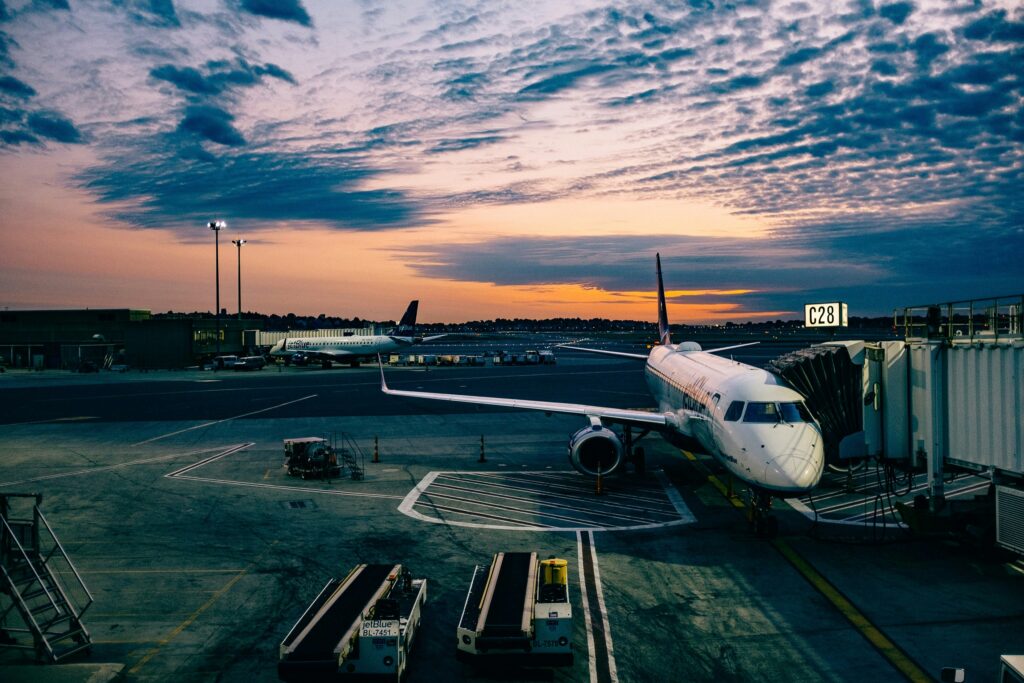Although dealing with an emergency while in flight might be frightening, being ready can make all the difference. Knowing what to do as a passenger or as a member of the crew can assist in guaranteeing everyone’s safety while aboard. This manual provides a systematic approach to managing an emergency while in flight, stressing the significance of composure, unambiguous communication, and prompt action.
1. Stay Calm and Listen to the Crew
Remaining composed is the first and most important thing to do in any emergency. Giving in to panic might make matters much worse by increasing the difficulty of properly following the required safety protocols. Throughout the incident, you must pay close attention to the Crew’s directions. Crew members undergo intensive training to handle these kinds of circumstances with skill and are prepared to lead passengers through the necessary safety procedures with authority and clarity. Ensuring the safety and security of all passengers on board can be greatly enhanced by putting your trust in their knowledge and quickly obeying their instructions.
2. Familiarize Yourself with Safety Procedures
At the beginning of every flight, it’s vital to attentively listen to the safety briefing provided by the Crew and thoroughly review the safety card located in the seatback pocket in front of you. Familiarizing yourself with critical safety information, such as the locations of the nearest exits, the correct brace position to adopt in case of an emergency, and the proper method for using an oxygen mask can be incredibly lifesaving should an emergency arise. This foundational knowledge equips you with the necessary tools to react swiftly and correctly, significantly enhancing your and your fellow passengers’ chances of safety during unexpected situations.
3. Secure Loose Items
During turbulence or when specifically instructed by the flight crew, it’s essential to ensure that all loose items are securely stowed away. Unsecured objects within the cabin can quickly become hazardous projectiles during sudden or unexpected aircraft movements, posing a risk of injury to passengers and crew members alike. Taking the time to secure personal items, including hand luggage and smaller personal effects, can significantly reduce the potential for accidents and ensure a safer environment for everyone onboard during turbulent conditions or in-flight emergencies.
4. Use Oxygen Masks if Deployed
Overhead compartment oxygen masks will automatically deploy in the event of a sudden change in cabin pressure. In the event that this happens, quickly cover your mouth and nose with the mask, making sure it fits tightly, fasten the elastic strap behind your head, and resume your regular breathing. Whether it’s adults or kids in need of assistance, you must put your mask on before trying to aid others. This guarantees that you stay alert and able to assist, thereby optimizing the security and welfare of every passenger during such situations.
5. Assume Brace Position if Instructed
In specific emergencies, like a turbulent landing, the crew may direct you to adopt a brace position. Heed the Crew’s guidance promptly or consult the safety card located in the seat pocket in front of you to ascertain the appropriate posture designed to minimize the risk of injury. This preventive measure is crucial for protecting yourself against sudden impacts or movements, ensuring that you are as secure as possible during critical moments of the flight. Following this procedure exactly as directed can greatly improve both your safety and the efficiency of the emergency response.
6. Evacuate Quickly if Needed
In scenarios requiring rapid evacuation or immediate response, the significance of the aircraft tow bar extends well beyond its conventional role in maneuvering aircraft on the ground. It becomes an essential instrument for quickly moving aircraft to secure areas or for clearing runways to accommodate emergency operations, including evacuations and emergency landings. Ensuring that airport staff are well-trained and knowledgeable about the use of such critical equipment is crucial for enhancing an airport’s emergency preparedness, ultimately aiding in the protection of lives and the reduction of potential damages.
Conclusion
Even though in-flight crises are uncommon, knowing what to do and being ready can make a big difference in how things turn out. Remain composed, pay attention to the team, and carefully follow directions at all times. By doing this, everyone’s safety and well-being will be increased.







